

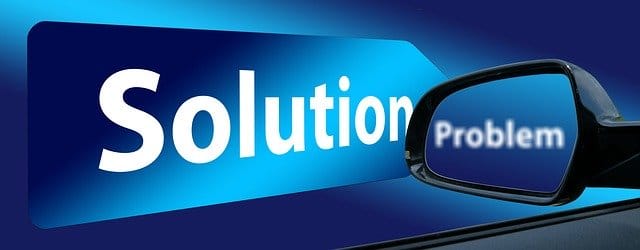
How to Decrease Your Time on Social Media and be Productive *
How to Keep Social Media From Sucking Up all of Your Time
As bloggers, social media is a key tool for promoting our blogs. Social media helps us to grow our blogs. Social media allows us to interact with our readers. Social Media gives us the opportunity to build our communities. Social media keeps us informed about current events and news in our niche.
However, social media can also be a massive drain on the limited time available to us. The big challenge for all bloggers is time management. How can we keep social media from sucking up all of our limited available time?
Two Ways Your Social Media Habits Could Impact Your Productivity
Avoid Spending Unscheduled Time on Social Media
Are you the blogger who spends large chunks of time on social media networks? I understand that it is important to tending to your own community. You do need to engage with other communities by leaving comments, and contributing to online discussions. It is important to increase your exposure and become known in your niche. However, you should schedule time for social media engagement. Then stick to your schedule.
Avoid Constantly Checking Your Social Media for Comments
Don’t be the blogger who is constantly checking their social media. Even using small amounts of time throughout your day adds up. These small distractions can quickly add up to wasting a significant amount of time during your day. Again, your social media time needs to be scheduled. Stick to your schedule. If you are unable to complete your tasks on social media, perhaps you need to schedule more time for those tasks.
How Does Your Social Media Behavior Impact Your Productivity?
How does this behavior on social media impact their productivity? Social media impacts your productivity in three key ways:
- If the time you spend on social media outweighs your gains from using your social media networks.
- Single tasking can increase your blogging productivity while reducing your stress. Research from the American Psychological Association has shown that multi tasking can cost as much as 40 percent of someone’s productive time.
- Dividing your time between writing and social media takes you much longer to write your blog post because your mind is not 100% on the task at hand. Focus on writing while ignoring everything else.
Reduce the distraction of social media. You need to reduce the above impacts and increase your blogging productivity. It doesn’t mean that you can’t be on social media. It just means you need to take a more planned and proactive approach to how you go about it. Following are two actions you can take to enhance your productivity:
Create a Social Media Strategy That Reduces Distractions
It can be very tempting to sign up to every social media network. Spending time daily on each of them is one way to create a social media presence, but it is unlikely to be successful.
If you want to maximize the time you spend on social media, you need a defined social media strategy for your blog. Your social media strategy doesn’t have to be complex and detailed. But it needs to cover these key points:
How much time per day/week can you spend on social media?
You have to determine how much time you have available for blogging. Then you have to decide how much of that time you need to spend on social media. The amount of time will vary between bloggers. There will be times when you may increase your time on social media to support your blogging goals. The key is setting how much time you will spend on social media and then sticking to it.
What Networks are Best for Your Social Media Engagement?
Many bloggers sign up to most social media networks to have a presence on them. However, unless you have a Social media manager, you may not have the time needed to truly engage on all of them.
Instead it may be preferable to select 2 or 3 and focus on them. It’s more important to create great content to share and spend time building your communities on the best networks for showcasing your blog and business.
The benefits from having a more effective presence on fewer social media networks will be greater than spreading your efforts thinly over lots of networks.
You Should Define Your Goals for Each Social Media Network
You should have a goal for what you hope to achieve on each social media network. It’s important to know why you are even on each social network. For example, my goal for Twitter is to be seen as an expert in my niche. I want to use Twitter to create freelance and media opportunities.
Facebook is about building a community where I can share high quality articles I curate specifically for them. Through helping them as much as I can, I am building up trust that will hopefully lead to them purchasing my products and services.
You Need to Determine Your Posting Frequency for Each Social Network
It’s tough to stand out and be noticed on all of the social networks. But that doesn’t mean posting more stuff will get you more notice. Buffer recently changed their Facebook social media strategy with great success.
Buffer cut their posting frequency by more than 50% on Facebook and decided to focus on quality over quantity. Their results underwent a dramatic shift. More than the most optimistic social media manager couldn’t have expected.
Even though they were posting less, their Facebook reach and engagement began to increase.
How Changing Our Social Media Scheduling Reaped Rewards
- I determined how frequently I post to each network and the type of content I share. I use Blog2Social to schedule my posts to Facebook, Twitter and LinkedIn, Medium and Tumblr.
- I use Feedly to read blogs and articles. Feedly helps me digest a lot of information to share on my networks. I will spend 10 – 15 minutes several times a week selecting items that I want to share.
- I set aside 45 – 60 mins a week to batch schedule my recycled and repurposed social media posts. I head to Blog2Social to determine which posts I will repurpose and share and to what networks.
Develop a Social Media Process That Works for You
Creating a specific process like this means you reduce the amount of time you go searching for content to share or procrastinating about what to share. Once I have the week scheduled, I see this as my base content and will still often share content, add conversation and respond to questions/comments on my networks when I check in once a day.
Social media doesn’t have to decrease your productivity. Create a social media strategy and batching process so you are in control of how you spend your time on social media and see your productivity flourish!
Do you find you are spending too much time on social media?

How Emotional Ads Work Best to Engage Your Customers *
Emotional Ads Work Best to Engage Customers
Most of us understand that the ads which engage us emotionally work better than those that don’t. I could hear many marketers utter a simultaneous “duhhhh!” when they read that.
You might find it surprising that many business owners still don’t believe that they are swayed by messages that speak to their emotions when making purchase decisions. These individuals continue to believe that buying is driven by facts.
For these super-rational decision makers lets look at some hard data….
How Brands Survive and Grow
I was discussing the book Brand Immortality by Pringle and Field with some colleagues earlier this month. An interesting finding from that book that I’ll share with you is an analysis of data from the IPA. This is the UK-based Institute of Practitioners in Advertising.
Included in the IPA dataBANK are over 1400 case studies of successful advertising campaigns submitted for the IPA Effectiveness Award competition over the last three decades. This analysis of the IPA data gauged the increased profitability of ad campaigns using emotional ads compared to using rational ads and using information to increase profits. The chart below compares the campaign results.

Analyzing the existing data, it was discovered that campaigns with purely emotional content outperformed those with purely rational content by nearly 2 to 1. They found the gap of to be 31% vs. 16% in favor of emotion based ad campaigns.
They took it a step further and compared emotion based campaigns to those that mixed emotional and rational content. Purely emotional campaigns still out performed these by 31% vs 26%.
Our Minds Process Emotions Unconciously
Why do ad campaigns based on emotions work better? Pringle and Field attribute these results to how our brain’s process emotional input. Our mind’s do this without conscience processing by us.
The authors do note that using an emotional marketing campaign may be more effective. The downside is that it’s not easy to create ads that effectively engage consumer emotions. However it’s is pretty simple to base a campaign on an “actual killer advantage”.
If you conduct an emotional campaign that is not based in reality, your brand can suffer actual damage to it’s reputation. Pringle and Field suggest that an emotional branding approach be “hard-wired into the fabric of the brand.”
This requires a major commitment as well as a good understanding of consumer motivation. They cite Nike’s overall theme of “success in sport” as an example of a brand that focuses on a key emotional driver and builds advertising, sponsorships, etc. around it.
Market Leaders Dominate Emotional Branding
Pringle and Field note, smaller brands can’t successfully follow the same emotional branding approach as the market leaders. However you may be able to segment your marketing and find a group of consumers that will respond to their unique appeal.
Ben & Jerry’s and Jones Soda, for example, aren’t the biggest players in their fields, but they have achieved success by appealing to smaller consumer segments.
Small Businesses Face Unique Challenges
Smaller brands do face additional challenges. Their brand name recognition is likely lower. An emotion-based campaign may confuse consumers who don’t connect the brand and product category.
Budweiser can run amusing and engaging commercials about Clydesdales and Dalmatians because 100% of the audience knows their products. A small business might have to take a “combined” rational and emotional approach even if it is slightly less effective. Or their emotion-based ads must clearly identify their product.
Emotion-based ads may be more difficult to create, but statistics tell us that it’s worth the effort.

Design Your Social Media Images to Create Brand Recognition *
Design Your Social Media Images to Promote Your Brand
Are you posting images across your social media pages?
Do you use these images to extend your brand recognition?
Using images on your social media pages is a sure way to engage your audience. In addition, the way you use logos, fonts and colors in your social media images is an important part of gaining brand attention.
In this article you’ll discover how to make your social profiles and visual content reinforce your brand and catch your audience’s eye.
Choose Your Fonts and Colors for Effect
The primary visual elements that create people’s perception of your brand on social media are fonts, colors and images. Your different goals may require different choices for each element.
The fonts available range from bold and loud to thin and delicate. Where does your company persona fit on this spectrum?
For the majority of your marketing, you should limit yourself to two or three main fonts. It’s acceptable to occasionally break that rule on social media.
Using creative fonts in your Facebook updates, Havaianas match their print theme and reflect the company’s fun and playful identity.
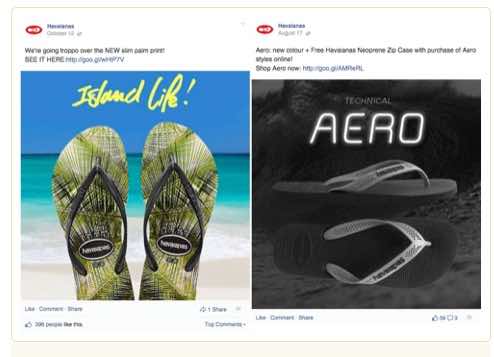
Choosing images and colors for your visual updates, you need to consider what feelings you want to evoke.
For example, if you are promoting a contest? Use bright, cheerful colors. Are you posting a staff update? You should use a well-lit portrait and include it in a design with your brand colors.
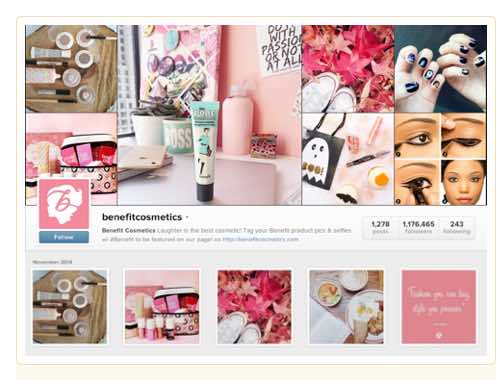
Beauty brand Benefit Cosmetics does a good job of reflecting their feminine identity on Instagram. Note the pink and white palette, simple imagery and use of a playful script font.
Design Reusable Templates
Each social media network has its own optimized image dimensions. It can be time-consuming to create individual images for each network every time you want to share visual content. Even creating a single image to share across all platforms can take more time than you’d like.

The easiest way to reduce your design time and maintain consistency is to create templates for the types of posts you share regularly. Don’t restrict yourself to one or two types of templates—make several to accommodate a variety of content. Here are some additional template ideas for weekly posts:
- Product Tips
- Event Posts
- Company Milestones
In the example below San Pellegrino posted a sequence of 10 tips on Instagram. Their simple template made the tips easy to create and instantly recognizable to their audience.
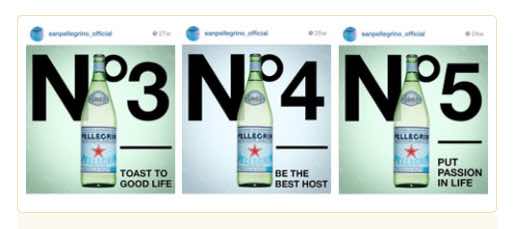
Create Complementary Profiles and Covers
Consistency is a key part of recognition and success. Use your company’s logo or a variation of its design for each of your social profile pictures to build your online brand recognition.
Even if you tweak your logo, your audience should still be able to recognize you immediately.

Havaianas experiments with fonts in their Facebook designs.
In the example above you can see how lululemon athletica has adapted a version of its standard red logo to match its cover image on Facebook and Twitter.
The harmony between your profile and cover photos is anchored by graphic elements such as color, text and imagery. Create a cover photo that complements your profile image. You can use existing marketing materials or create something new.
If you create a custom cover image and want to ensure that the colors match your profile picture, use a color picker tool to extract the color hex code. A hex code is a six-digit code that represents an exact color universally recognized by HTML and CSS.
When you know your hex codes, you can use the same colors in your designs over and over again. This removes any variation or guesswork and provides for a consistent look.
Use Watermarks Consistently
If you include a logo or other icon with your images, you should create guidelines addressing your logo size and placement. Doing this avoids appearing sloppy by having inconsistent logo sizes or random logo placement.
In the picture below you can see that the H&M logo is the same size and in the same place on each photo. Being consistent plays a part in their overall brand recognition.
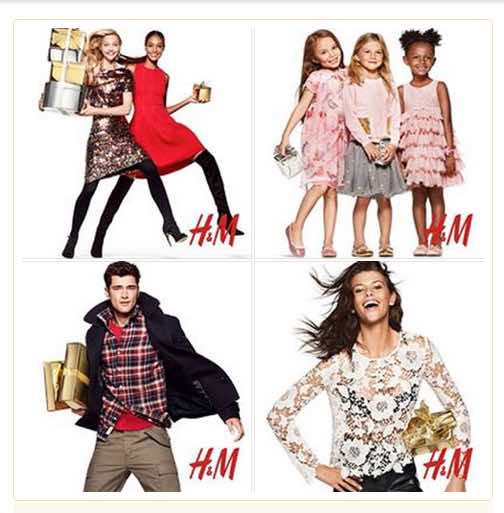
A quick tip: Don’t place your logo flush with the edge of your photo. Instead, leave some space around it to make it neater and look more intentional.
Let Your Image Do the Talking
Up to 90% of the information transmitted to your brain is visual, so it’s no surprise that people respond well to great visual design.
Using pictures as the focus of your updatesgives you a great opportunity to be creative. When you design your visual content, rely less on your words. Let your colors, images and backgrounds convey your message.
In the picture below notice how the compelling background image and Twitter icon grab your attention first and work well with the more subtle text call to action.
When you have the perfect picture, sometimes you don’t need to use text overlays at all. Use clever images to capture your audience’s attention. In the image below, Ben and Jerry’s used fewer than 10 words in their updates. They let their product pictures do their talking.

Over to You
With over two billion people active on social media every day, improving how you use visual assets is a powerful way to drive more people to your business.
Use consistent fonts and colors and your existing branding to extend your recognition beyond the usual places. No matter where you post, make sure your audience can recognize you immediately.
Make the most of your visual assets and enjoy creating beautiful designs. The social media race is on, and responsive and engaging design is your express ticket to the finish line.
What do you think? Have you used any of these tips already? Do you have additional ideas to share? Leave your comments and questions below.
